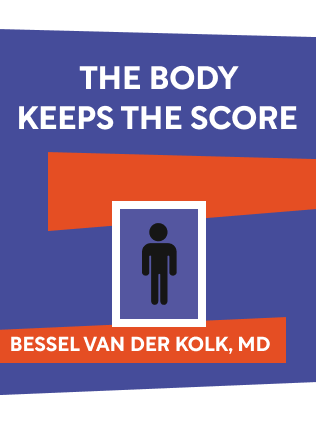

This article is an excerpt from the Shortform book guide to "The Body Keeps The Score" by Bessel van der Kolk. Shortform has the world's best summaries and analyses of books you should be reading.
Like this article? Sign up for a free trial here .
What is the emotional brain vs rational brain? What’s the difference and what do they do?
The emotional brain vs rational brain outlines how we react to different situations, including trauma. We use both parts of our brain, and thinking about both parts can help us understand how PTSD works.
Keep reading to find out the difference between the emotional brain vs the rational brain and how they work together in trauma.
Your Emotional Brain vs Rational Brain: The Balance
What’s the difference between emotional brain vs rational brain? As shown in the example of being afraid of a snake, only to realize that it’s a rope, the different parts of your brain must work together to help you successfully navigate the world, but there are differences between your emotional brain vs rational brain.
Your thalamus is an area in the limbic system that takes all the sensory information you take in — the sights, sounds, and smells around you — and puts it together into a fully-formed perception of what you’re experiencing. The thalamus filters information into what’s relevant and what’s not, making it vital for concentration and learning.
During a traumatic experience the thalamus shuts down, which is why survivors remember traumatic events as fragmented sensory (which return during flashbacks) instead of linear stories. After the event, the thalamus is unable to effectively filter between important and irrelevant information, so PTSD sufferers are constantly on sensory overload; to cope, they tend to try developing tunnel vision and block out the excess information, but in the process they tend to also filter out pleasure and joy.
Under normal circumstances, the thalamus passes information to two places in the emotional brain vs rational brain:
- The amygdala, in the unconscious brain, which quickly determines whether the information qualifies as a threat. Think of the amygdala as a smoke detector — it’s quick to react, but can sometimes confuse some burnt toast for a full-blown fire.
If the amygdala deems something to be a threat, it alerts the hypothalamus and brain stem, which trigger the stress-hormone system and autonomic nervous system (ANS) to release stress hormones, including cortisol and adrenaline. This raises your heart rate, blood pressure, and rate of breathing to get your body ready for fight or flight. - The frontal lobes — specifically the medial prefrontal cortex (MPFC) — where the information reaches your conscious awareness. The MPFC acts as the watchtower, where logic can weigh in and let you know to calm down if that snake is, in fact, just a rope.
It takes slightly longer (we’re talking milliseconds) for information to reach the MPFC, so your body will react first and think later. If the MPFC determines that there is, in fact, no real threat, they can put a halt on the stress hormones and preprogrammed response that the amygdala has triggered.
PTSD don’t have a healthy balance between the amygdala (smoke detector) — which can be hypersensitive and hyperreactive — and the MPFC (watchtower) — which can be too weak to temper the amygdala — so they easily go into panic mode for unnecessary reasons. Aside from living in constant stress, and suffering the physical damage that results, this makes it difficult to maintain relationships with other people if you can’t effectively gauge whether their intentions are good or threatening.
There are two methods of correcting this imbalance between the smoke detector and the watchtower, which we’ll explore in more depth in later sections.
- Top-down involves strengthening your watchtower’s ability to weigh in. Meditation and yoga can help in this approach by making you more aware of your body’s physical and unconscious responses.
- Bottom-up targets the unconscious mind and recalibrates the ANS through breath, movement, and touch.
There are many factors to consider in emotional brain vs rational brain, and they work together all the time to help you function.

———End of Preview———
Like what you just read? Read the rest of the world's best book summary and analysis of Bessel van der Kolk's "The Body Keeps The Score" at Shortform .
Here's what you'll find in our full The Body Keeps The Score summary :
- How your past trauma might change your brain and body
- What you can do to help your brain and body heal
- Why some trauma survivors can't recognize themselves in the mirror






